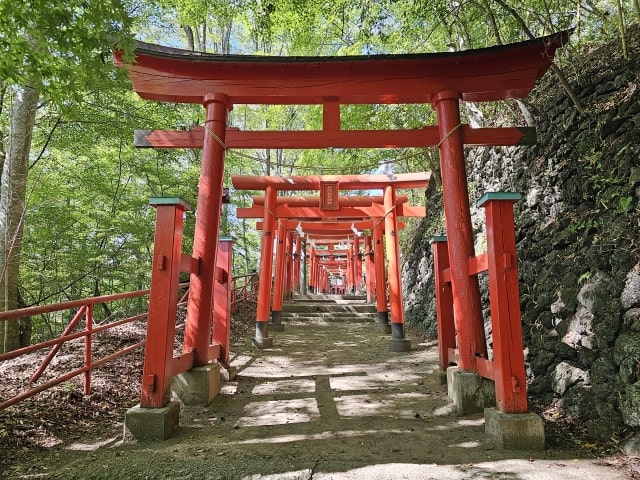Over the past few years, the number of foreign tourists visiting Japan has surged, especially in popular destinations like Tokyo and Kyoto. While tourism is vital to Japan’s economy, issues related to the manners of foreign tourists have been increasingly highlighted. Local residents and those working in the tourism industry have voiced concerns such as “There are too many foreign tourists,” or “Their manners are terrible.” In this article, we explore the issue of poor manners among foreign tourists, the reasons behind it, and possible solutions.
Pull-ups on a Torii Gate? Recent Incident Raises Concerns
Recently, a foreign tourist made headlines after performing pull-ups on a torii gate at a famous shrine in Kyoto. This behavior sparked a wave of criticism on social media, and while the tourist later apologized, many saw it as a blatant disrespect toward Japanese culture.
A torii gate is a symbolic structure marking the entrance to a sacred space, usually a Shinto shrine. Despite its religious and cultural significance, the tourist seemed unaware of its importance, treating it as merely a decorative object. This incident raises the broader question: why are such displays of bad manners becoming more common among foreign tourists?
Why Are Manners Among Foreign Tourists Deteriorating?
As the number of foreign tourists in Japan continues to rise, so do instances of poor behavior. Several factors contribute to this trend:
- Cultural and Religious Ignorance: Many foreign tourists are unaware that places like shrines and temples are not just tourist attractions but also sacred religious sites. Especially in countries where religion is less present in daily life, visitors may fail to grasp the reverence these locations command in Japanese culture.
- Social Media Influence: Some tourists are more concerned with creating eye-catching content for social media than respecting local customs. The desire to stand out online or gain more followers can lead to reckless behavior. The recent torii gate incident may have stemmed from such motives.
- Overtourism and Lack of Guidance: With the sheer number of tourists flooding popular spots, local governments and attractions struggle to provide adequate guidance about proper manners. When signage or instructions are lacking, visitors may not realize what is acceptable and what is not.
Other Examples of Misbehavior at Tourist Sites
The torii gate incident is just one of many examples of poor behavior by tourists in Japan. Here are a few other notable cases:
- Loud Conversations at Shrines and Temples: Many visitors disturb the peaceful atmosphere of religious sites with loud conversations or phone calls.
- Littering: Tourist hotspots have seen a rise in littering, with local residents often left to clean up after visitors.
- Vandalism of Historic Sites: Some tourists have even etched their names or messages onto historical landmarks.
- Improper Behavior in Public Baths: Tourists unfamiliar with the etiquette of Japanese baths (onsen) often break rules, such as entering with tattoos or failing to follow proper hygiene practices.
These incidents highlight the gap in cultural understanding and the need for better education about Japan’s traditions and customs.
Why Some Locals Feel, “We Don’t Want Tourists Anymore”
As these instances of bad manners increase, many local residents and workers in the tourism industry have started to express frustration. Some have even voiced the sentiment, “We don’t want any more tourists.” The reasons behind this sentiment include:
- Loss of Tranquility: The once peaceful and serene environments of small towns and cultural sites are often overwhelmed by the influx of tourists, leading to noise and overcrowding.
- Overcrowding of Public Transport: Public transportation systems, especially in tourist-heavy areas, are becoming overly congested, affecting local commuters.
- Cultural Heritage at Risk: With the repeated violation of cultural and religious sites, there is growing concern that Japan’s cultural heritage is being damaged.
Solutions for Improving Tourist Behavior
To address the issue of poor manners among foreign tourists, several steps can be taken by local governments, tourist destinations, and the tourism industry:
- Multilingual Signage: Providing clear instructions and guidelines in multiple languages at cultural sites, such as shrines, temples, and hot springs, can help visitors understand and respect local customs.
- Educational Campaigns: Distributing guidebooks or using mobile apps to inform tourists about Japanese manners before they arrive can be an effective preventative measure.
- Social Media Outreach: Running awareness campaigns on platforms like Instagram and Twitter can encourage tourists to adopt respectful behavior while also promoting positive tourism.
Conclusion: Striking a Balance Between Tourism and Local Life
As Japan continues to welcome increasing numbers of foreign visitors, the issue of bad manners is becoming more prominent. While complaints about the overwhelming number of tourists and their poor behavior are valid, it’s essential to focus on solutions. Through better education and clear guidelines, both tourists and local communities can coexist harmoniously.
Tourism is a crucial part of Japan’s economy, and by fostering mutual respect and understanding, we can ensure that visitors have a positive experience while preserving the cultural integrity of Japan’s unique sites.









Comments